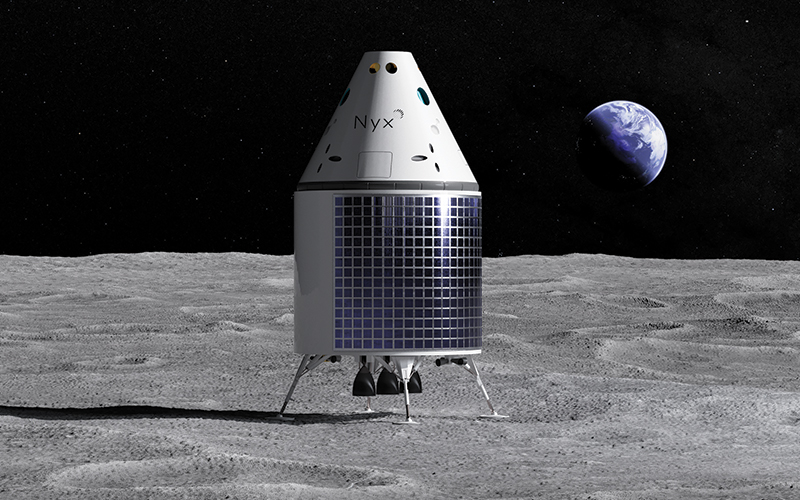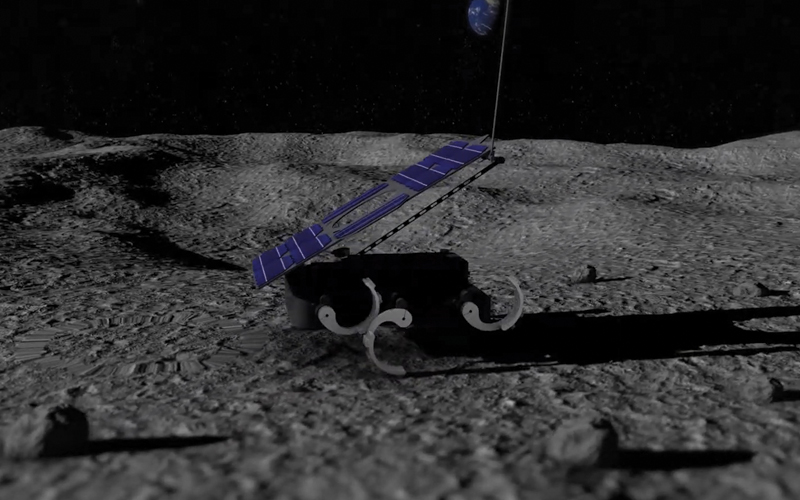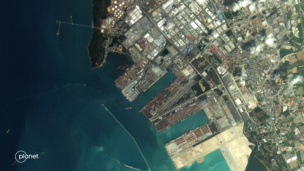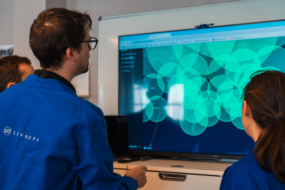It’s not hyperbole, nor is it a gimmicky marketing one-off. Europe is going to the Moon with the intent of being both an explorer and enabler of the new lunar economy.
As part of NASA’s Artemis program, the European Space Agency is contributing both the service module for the Orion spacecraft and a key element of the Lunar Gateway, NASA’s Moon-orbiting space station. These contributions have bought Europe access to the lunar outpost and, pending final negotiations, even access to the surface of the Moon. That means that when the newest class of ESA astronauts is selected later this year, one of them could be the first European to set foot on the lunar surface.
European industry has also set its sights on the Moon and beyond, developing everything from inflatable habitats to satellites in lunar orbit. These communications and navigation constellations would support missions both around the Moon and on its surface.
We rounded up a few active projects that Europe is leading on both the public and private fronts.
Habitats
Spartan Space – EUROHAB
French startup Spartan Space is developing EUROHAB, an inflatable semi-permanent lunar habitat. At ~7m in diameter, EUROHAB is designed to accommodate two to four astronauts for one to two weeks. Regenerative hydrogen fuel cells and flexible solar panels will ensure the habitat is ready for the next group of astronauts, with ground controllers able to monitor systems’ health during missions.
- The company is currently under contract with CNES, France’s space agency, to manufacture a full-scale functional prototype of the EUROHAB concept.
Landers
The Exploration Company
Franco-German startup The Exploration Company was founded in 2021 with the rather audacious goal of “democratizing space exploration.” The company plans to begin executing against its mission in LEO, but eventually plans to extend its presence to the Moon with a modular, reusable orbital vehicle called Nyx.

Nyx would be capable of landing on the Moon, performing 100km hops between landing zones, or, alternatively, returning to Earth with a sample. In Nov. 2021, the company closed a €5.3M ($5.3M) seed round. The Exploration Company is working towards launching the first Nyx prototype aboard the maiden Ariane 6 flight next year.
OHB Systems
Germany’s OHB Systems has partnered with Israel Aerospace Industries to develop the Lunar Surface Access Service (LSAS), which it describes as “the first European Moon shuttle service.” The first LSAS mission will be launched aboard a vehicle based on the Israeli Lunar Lander (ILL) no earlier than 2025. OHB says that 100+ potential customers have shown interest in the service.
Airbus and ESA
Argonaut, also known as the European Large Logistics Lander, was kickstarted by ESA. Currently, the vehicle is projected to stand at around 6m tall with a payload capacity of up to 1,500 kg. The first Argonaut mission could launch in the back half of the 2020s, delivering logistics support as part of NASA’s Artemis program. In 2020, ESA contracted Airbus to start the definition phase of the lander’s development. Additional decisions on the future of the vehicle are expected to be made at ESA’s ministerial level council meeting later this year.
Planetary Transportation Systems
The Autonomous Landing and Navigation Module (ALINA) lander is being developed by Germany’s Planetary Transportation Systems. The lander is designed to be compatible with all major commercial launch vehicles and is capable of carrying up to 100 kg to the surface of the Moon. The lander utilizes commercial off-the-shelf parts with the aim of reducing the cost of landing on the Moon.
Rovers
Lunar Zebro
Driven by TU Delft students from the Netherlands, Lunar Zebro is producing what it calls the world’s smallest and lightest lunar rover. The mission is expected to be launched no earlier than 2023 aboard a commercial lunar lander. Once on the surface of the Moon, the rover will capture imaging around the lander in order to study the effects that landing methods have on the lunar surface. The mission is expected to last between 15 and 30 days.

Spacebit
UK-based Spacebit is developing Asagumo, a small four-legged spider-like rover. The 1.5 kg vehicle was designed to explore beneath the lunar surface by navigating ancient lava tubes. The company has already booked rides for two Asagumos, with one being carried aboard an Intuitive Machines Nova-C lander and another on Astrobotic’s Peregrine lander.
Orbiters
ESA
Moonlight is an initiative from ESA to develop a constellation of satellites in lunar orbit that would provide connectivity and navigation services for lunar missions. In June 2021, ESA awarded study contracts to two industry teams, led by Surrey Satellite Technology and Telespazio. According to the agency, utilizing shared comms and navigation services would reduce the cost and design complexity of missions to the Moon.
Surrey Satellite Technology
Surrey Satellite Technology (SSTL) designed Lunar Pathfinder to enable affordable communications services for lunar missions. The spacecraft offers S-band and UHF links to lunar assets on the surface and in orbit around the Moon, and an X-band link to Earth. The Lunar Pathfinder spacecraft is expected to be launched in 2025. Lessons learned from operating the Lunar Pathfinder spacecraft will be applied to the ESA Moonlight initiative.
And this is just the start…
European companies are developing hardware and services for every imaginable aspect of the lunar economy, from launch to in-situ resource utilization solutions. These companies are all ensuring that when the world returns to the Moon, Europe is right there alongside them.




